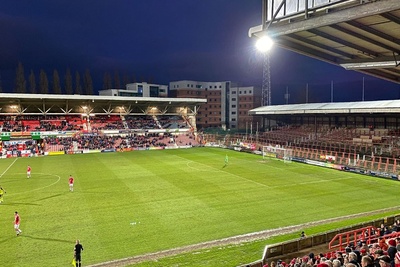
Most of the oldest football stadiums in the world are actually in the UK. This is partly to do with a British sense of nostalgia and partly because most foreign teams have updated their grounds to state of the art facilities.
Wrexham’s Racecourse Ground is the oldest stadium used for football today, having opened in 1807. It isn’t the oldest football stadium, though, as Wrexham only stared playing there in 1864, however, it does hold the title of the oldest stadium in the world that hosts international matches, with Wales having played their on and off since 1877.
Bramall Lane in Sheffield is therefore the oldest football stadium in the world, but when it opened its doors for the first time who played on the pitch? We’ll answer all of those questions and more.
To begin we have a list of the 25 oldest stadiums still in use followed further down by a journey through Bramall Lane over the years.
25 Oldest Stadiums Still in Use
| Stadium | Year Built | First Fixture |
|---|---|---|
|
Racecourse Ground
Wrexham A.F.C |
1807 | Wrexham v Prince of Wales Fire Brigade (22nd October 1864) |
|
Bramall Lane
Sheffield United |
1855 | Sheffield FC v Hallam FC (29/12/1862) |
|
Field Mill One Call Stadium
Mansfield Town |
1861 | Unknown |
|
Tannadice Park
Dundee United |
1870 | Unknown |
|
Rodney Parade
Newport County AFC |
1877 | Newport v Cardiff (02/12/1876) |
|
Stamford Bridge
Chelsea FC |
1877 | Unknown |
|
Deepdale
Preston North End |
1878 | Preston North End v Eagley (05/10/1878) |
|
Ewood Park
Blackburn Rovers |
1882 | Blackburn Rovers v Sheffield Wednesday (09/04/1881) |
|
Turf Moor
Burnley FC |
1883 | Burnley v Rawtenstall (17/02/1883) |
|
Portman Road
Ipswich Town |
1884 | Unknown |
|
Anfield
Liverpool FC |
1884 | Everton v Earlestown (28-9-1884) |
|
Gigg Lane
(Bury) |
1885 | Bury v Wigan (12/09/1885) |
|
Victoria Park
Hartlepool United |
1886 | Hartlepool United v Newcastle United (02/09/1908) |
|
Tynecastle
Heart Of Midlothian |
1886 | Hearts v Bolton Wanderers (10/04/1886) |
|
Valley Parade
Bradford City |
1886 | Bradford City v Gainsborough Trinity (15/09/1903) |
|
Ashton Gate
Bristol City |
1887 | England v Wales (20/04/1899) |
|
Oakwell Stadium
Barnsley |
1888 | Unknown |
|
Molineux
Wolverhampton Wanderers |
1889 | Wolverhampton Wanderers v Notts County (07/09/1889) |
|
Moss Rose
(Macclesfield) |
1891 | 12/09/1891 |
|
Edgeley Park
Stockport County |
1891 | Unknown |
|
Goodison Park
Everton FC |
1892 | Everton v Bolton Wanderers (02/09/1892) |
|
St James' Park
Newcastle United FC |
1892 | Unknown |
|
Celtic Park
Celtic |
1892 | Celtic v Renton (20/08/1892) |
|
Priestfield Stadium
Gillingham |
1893 | New Brompton Reserves v Grays (02/09/1893) |
|
Home Park
Plymouth Argyle |
1893 | Plymouth Argyle v Northampton Town (05/09/1903) |
History of the First Football Stadium – Bramall Lane
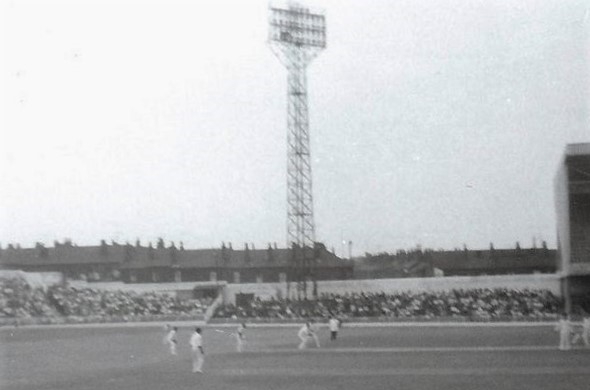
Despite the fact that it is now the home of Sheffield United Football Club, Bramall Lane began life as a cricket ground without a football in sight. It actually hosted six different local cricket clubs including Wednesday Cricket Club that would later become Sheffield Wednesday Football Club.
Bramall Lane’s most famous use will always be for hosting football, but there’s no denying the importance that cricket has played in its history. In fact, it’s one of only two stadiums in the world that has hosted an England football international and an England cricket international, the other being the Oval in London.
The England cricket game came in 1902 when Australia beat the home team by 143 runs. The cricketers blamed the loss on bad light, with smoke from local factories believed to be to blame. The attendances at the ground were also poor and so international cricket never again darkened the door of Bramall Lane.
The Arrival Of Football at Bramall Lane
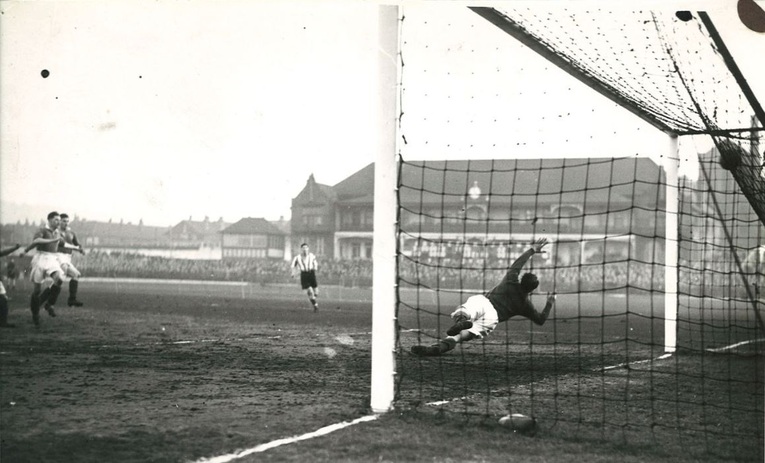
1862 saw football played at the ground for the first time when Sheffield Football Club went up against Hallam Football Club, with the gate money used to raise money for Lancashire Distress Fund. That opened the door for all of the most important football games in the local area to be held at the ground, starting with the first ever football tournament that the world had seen.
The Youdan Cup was held at Bramall Lane in 1867, with the final seeing Hallam beating Norfolk. A year later and the Cromwell Cup was held at the ground thirteen years after it had first opened its doors. The Cromwell Cup was won by a reasonably newly formed team called The Wednesday. Ironic that they won their first major silverware at the ground that is now the home of their fiercest rivals.
In 1877 The Wednesday won the Sheffield Challenge Cup, beating Hallam in the final, in front of a crowd of around 8000. Bramall Lane had essentially become The Wednesday’s home whilst they waited for a new ground to built at Olive Grove.
Bramall Lane – Bringing The Associations Together
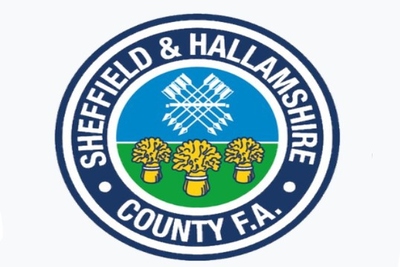 At the beginning of professional football’s life it wasn’t the coordinated being that we know and love today. There wasn’t one over-arching footballing association that was in charge of all of the matches.
At the beginning of professional football’s life it wasn’t the coordinated being that we know and love today. There wasn’t one over-arching footballing association that was in charge of all of the matches.
Instead, each district had its own association that took control of the games the local teams played.
Enter Bramall Lane.
In 1871 the ground hosted the first inter-association football match when the London Football Association’s representative team lost 3-1 to the Sheffield Football Association’s team.
Sheffield’s FA regularly organised such matches against different Football Associations, with Glasgow being one of the most common FAs they’d go up against.
Sheffield United FC
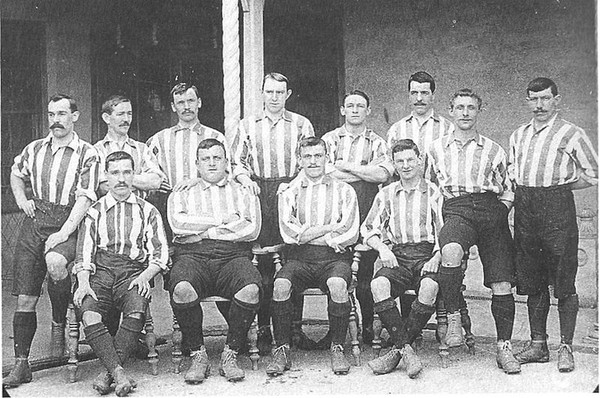
In 1889, 27 years after Bramall Lane hosted its first football game, 22,688 people paid money to watch Preston North End and West Bromwich Albion go head-to-head in an FA Cup semi-final. It was at that moment that the owners of the ground realised they could make money on a more consistent basis by having a team who could called the stadium their permanent home.
Sheffield United were formed on the 22nd of March of that year and named after the cricket team that were also still calling Bramall Lane their home. In fact cricket was still so popular that a new pavilion was built in 1900.
Bramall Lane wasn’t just for cricket and football, either. It was a true multi-use venue, with a cycling track running around the perimeter of the pitch until it was removed in 1901. There was always some debate around that and it raged for years, with a running track replacing it in 1935.
The Modern Day Bramall Lane
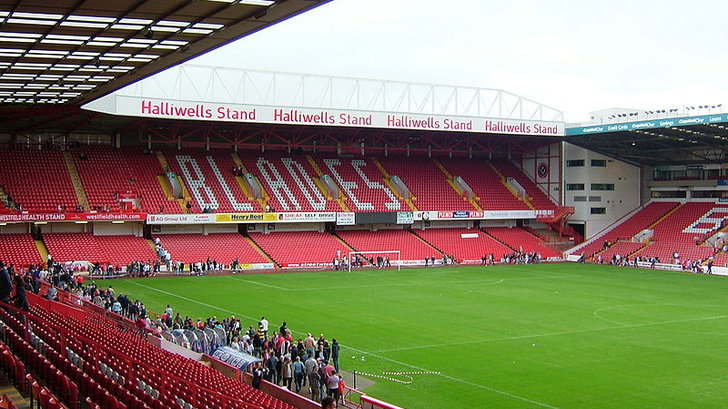
There’s an episode of the famous old British sitcom in which Trigger, a dim-witted character, is rewarded by the council for saving them money. He is being presented an award for using the same broom to brush the streets for twenty years.
Speaking to Del Boy, one of the main characters of the sitcom, Trigger talks of how the broom has been so well maintained by himself over the years. He says, “And that’s what I’ve done. Maintained it for 20 years. This old brooms had 17 new heads and 14 new handles in its time”.
Del Boy is incredulous and responds, “How the hell can it be the same bloody broom then?” Likewise, many might ask how exactly the Bramall Lane we have come to know nowadays can possibly be called the same ground as stood on the site over 150 years ago. It’s a fair question.
The truth is that it’s not the same turf, it’s not the same structures that run around the side of that turf and it’s definitely not the same crowd that turn up to watch the matches that are played there. But football grounds are about more than just the bricks and mortar that make up the buildings or the blades of grass that combine to stitch the pitch together.
Football stadiums are about the sprits of the games that have been played in them before. They are the ghosts of goals scored long ago and of tackles cheered by a different generation. The same physical buildings may not stand at Bramall Lane any more, but the spectres of players from a bygone era still stand in the tunnel of the world’s oldest football stadium that is still in use.
